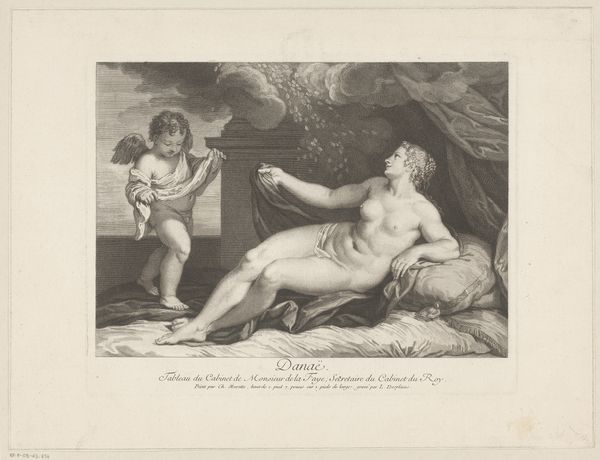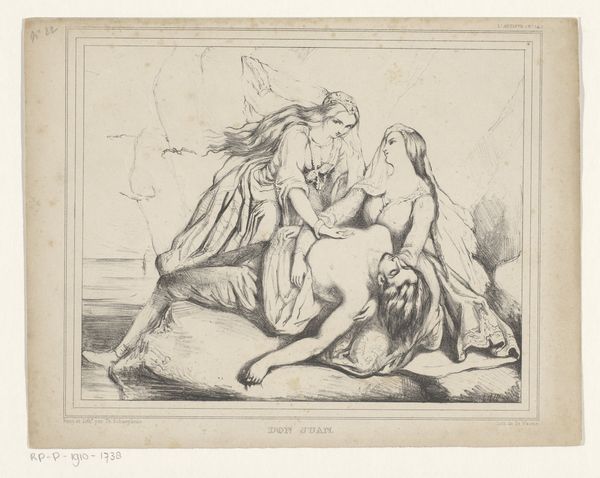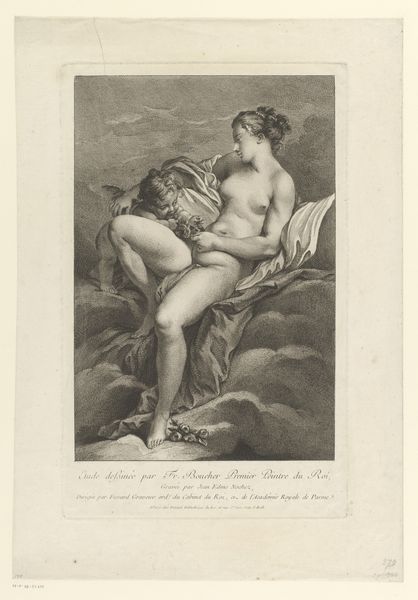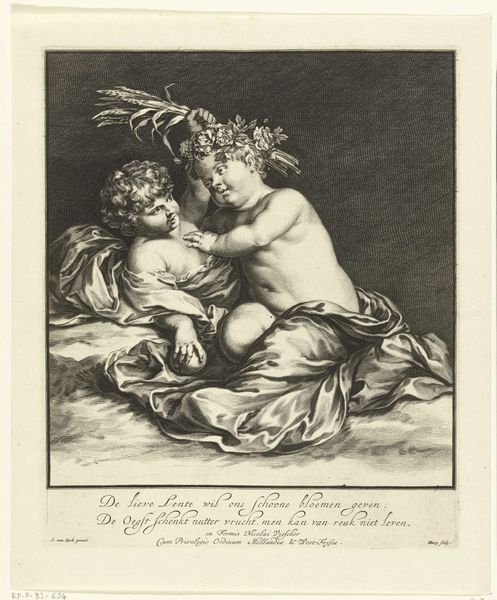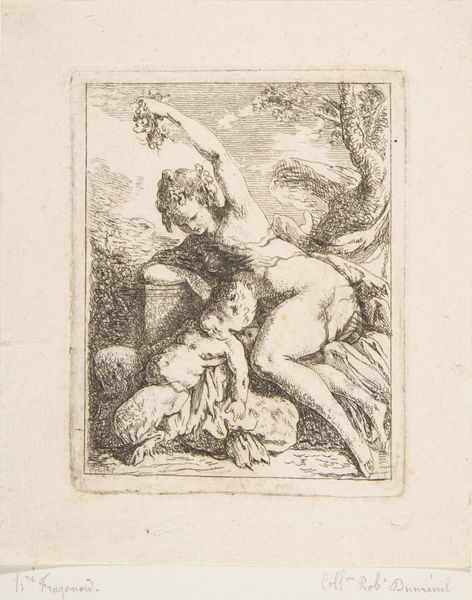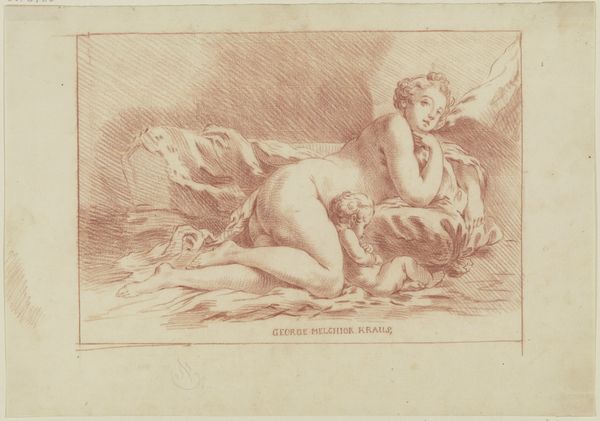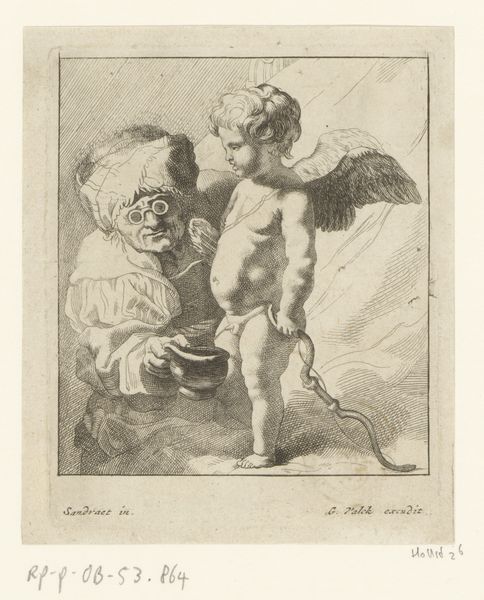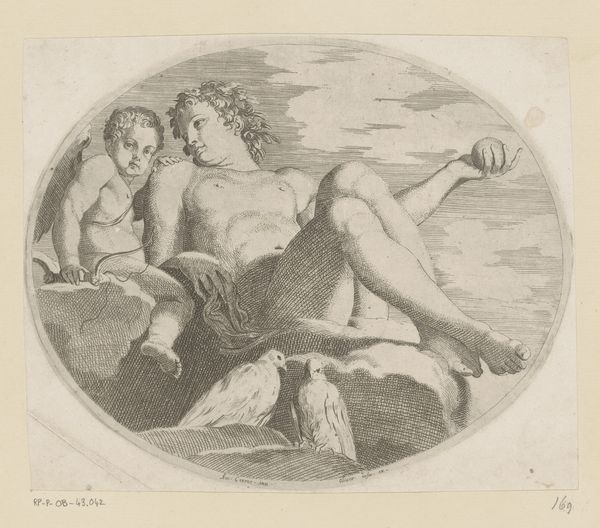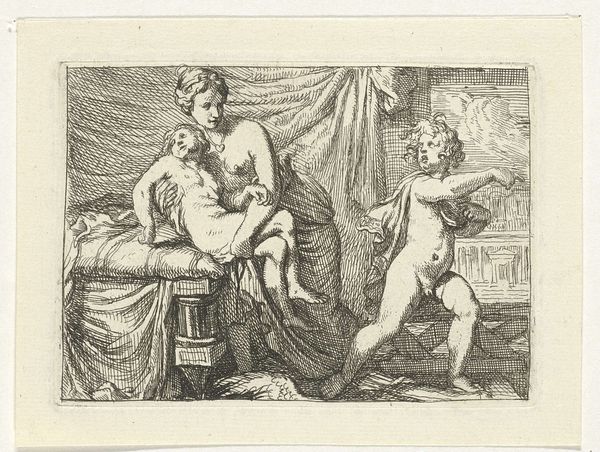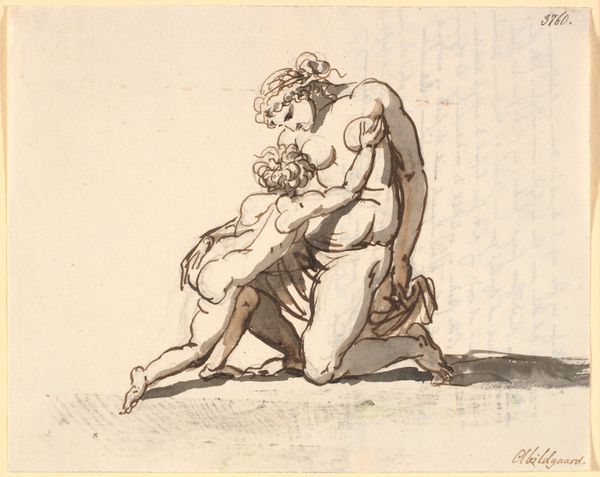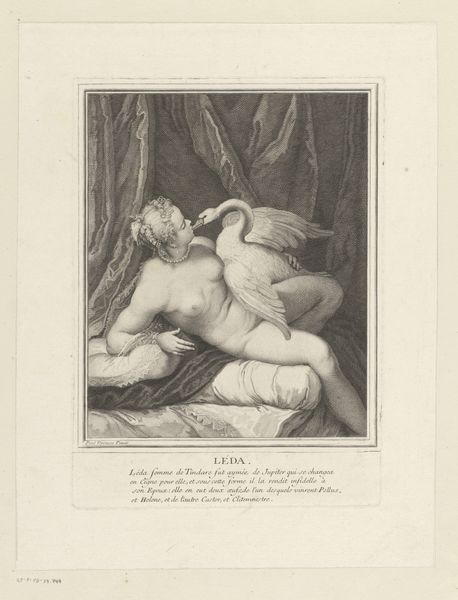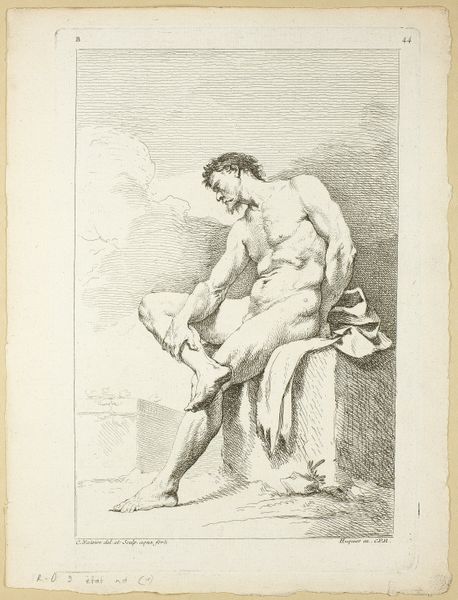
engraving
#
baroque
#
old engraving style
#
figuration
#
nude
#
engraving
Dimensions: height 196 mm, width 264 mm
Copyright: Rijks Museum: Open Domain
Editor: This is "Two Children," an engraving made sometime between 1632 and 1664 by Girolamo Rossi. I’m struck by the dynamism created by the swirling drapery and the children’s active poses. How would you approach interpreting this piece? Curator: Given my interest in materiality, I’m particularly drawn to how the engraving process itself shaped the final image. Consider the artist's labour, the precise work involved in carving the lines into the metal plate. Notice, too, how Rossi has manipulated those lines to create varying tones and textures, imitating the folds of the drapery, the softness of the children's skin. What does this process tell us about the cultural value placed on handcrafted objects at this time, vis-a-vis industrial processes? Editor: It's interesting to think about the labor that went into creating the engraving. I hadn’t considered that. Are you suggesting that the print acts as a commodity in this society? Curator: Precisely. These engravings were widely distributed, making art more accessible. How does this compare with painting’s role as the primary medium of the aristocracy? What message did prints like these spread across the land through their distribution network? Editor: That’s a totally different perspective than I usually consider. It also gives the image a political quality I had overlooked. Thinking about the artistic decisions and their production changes my understanding of the final artwork. Curator: Indeed, by analyzing art through its materiality, we move beyond aesthetic appreciation and delve into its historical, economic, and cultural significance. Editor: I appreciate that. Thank you for illuminating the complex social web in which "Two Children" came into existence.
Comments
No comments
Be the first to comment and join the conversation on the ultimate creative platform.
